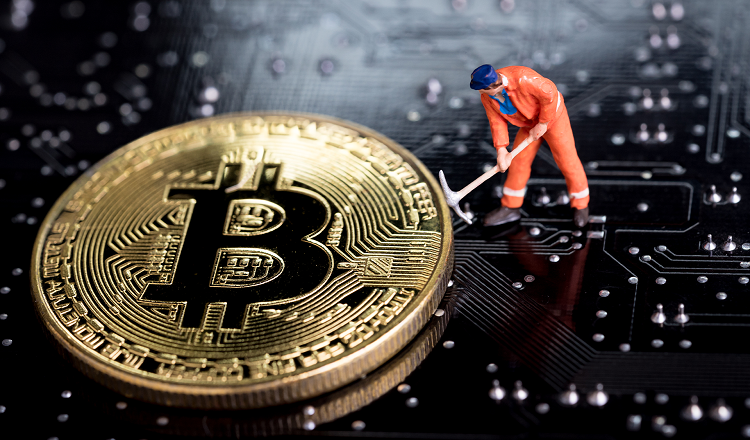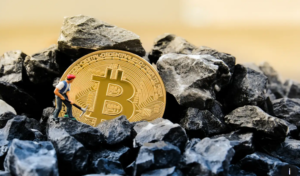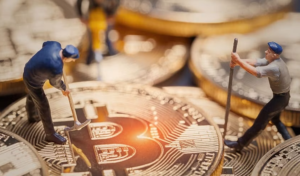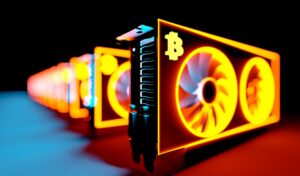Are you sick and tired of sitting on the sidelines and seeing others profit from cryptocurrencies? Don’t worry, my friend! You too can start earning those virtual money by starting to mine cryptocurrencies if you have the necessary equipment and information. We’ll show you how to build your own cryptocurrency mining equipment using this step-by-step manual and join the market.
Let’s first discuss what bitcoin mining is in reality. For the most part, mining entails resolving challenging mathematical puzzles in order to validate transactions on a blockchain network. Miners receive payment in the cryptocurrency they are mining as compensation for their labour. Although it can seem simple, mining can be a very competitive and difficult business. But it can also be highly profitable if the correct gear and software are used.
Now that mining pools and cloud mining services are accessible, you might be wondering why anyone would bother with DIY mining. One benefit of DIY mining is that it provides you total control over your hardware and software, enabling you to optimise your mining process. Additionally, since you won’t have to pay a third party service’s fees, DIY mining may end up being more affordable in the long run. So let’s get started mining if you’re ready to put on your work boots and dig like a pro!
Hardware specifications
You’ll need to make the appropriate hardware investments to start doing your own bitcoin mining. Your choice of cryptocurrency to mine will determine the specific hardware you’ll require. For instance, mining Ethereum may be done using GPUs but mining Bitcoin normally requires ASIC (Application-Specific Integrated Circuit) miners. Although they can also be used for mining, CPUs are less effective than ASICs or GPUs.
Cost, power consumption, and hash rate—the pace at which the hardware can solve the mathematical puzzles needed for mining—should all be taken into account when selecting hardware. Given that mining can produce a lot of heat, it’s also critical to take your hardware’s cooling needs into account.
There are numerous online stores, including Newegg, Amazon, and Microcenter, where you may purchase the required hardware to get started. Make sure to shop around and compare prices before making a purchase to get the greatest offers. You’ll be well on your way to being a profitable DIY crypto miner with the appropriate hardware.
Software specifications
Installing the required software is required once you have the appropriate hardware for mining. This also applies to mining software, which is used to network-connect your devices and begin solving mathematical puzzles. It also comes with a wallet that you can use to keep your mined currencies safe.
There are numerous possibilities for mining software, each having advantages and downsides of their own. CGMiner, BFGMiner, and EasyMiner are a few of the well-liked choices. It’s crucial to take into account features offered, convenience of use, and hardware compatibility while selecting mining software.
Depending on the kind of cryptocurrency you’re mining, there are a variety of wallets accessible. Exodus, Ledger Live, and MyEtherWallet are a few well-liked choices. It’s crucial to take into account aspects like security, usability, and the capacity to hold several cryptocurrencies while selecting a wallet.
In general, you can optimise your mining operation and safely store your hard-earned money with the correct software.
Putting Together the Mining Rig
It’s time to set up your mining rig now that you have the required gear and software. Although the process can seem a little intimidating, with our step-by-step guidance, you’ll be ready to go in no time.
Your hardware must first be assembled in accordance with the manufacturer’s instructions. This includes syncing your motherboard, power supply, and cooling system with your GPUs or ASICs. Installing your mining programme and wallet can be done after your hardware has been put together.
To connect to the mining pool or network you’re using, you’ll then need to set up your network settings. Setting up firewalls, configuring port forwarding, and inputting your mining pool login information may be required.
As with any technical configuration, problems might occur when the system is in use. Compatibility concerns with hardware or software, network configuration challenges, and power supply problems are common problems. You may, however, get through these difficulties and begin mining like a pro with the help of our troubleshooting advice and a little bit of perseverance.
Mining Methods
It’s time to begin mining now that your mining setup has been configured. Utilising your hardware, cryptocurrency mining entails solving challenging mathematical puzzles. New coins are created and added to the blockchain when a problem is resolved.
You must join a mining pool or establish a network connection before you can begin mining. This will enable you to pool your mining resources with those of other users, improving your ability to crack mathematical puzzles and reap rewards.
You can tweak your hardware’s overclocking parameters to raise its hash rate to maximise your mining efficiency. A mining pool with minimal fees and a high hash rate is another option. To make sure you’re maximising your profits, it’s crucial to constantly check your mining performance.
With the help of these pointers, you may succeed as a do-it-yourself cryptocurrency miner and get paid for your labour.
Managing the Cryptocurrencies You’ve Mined
It’s crucial to correctly manage your cryptocurrencies after you’ve mined them. This covers exchanging, offering for sale, and trading the coins as needed. You may purchase or sell cryptocurrencies on a variety of online exchanges, including Coinbase and Binance. Make sure the exchange you choose is reliable and offers the cryptocurrencies you’re interested in by doing your homework.
Additionally, you may monitor the change in value of your cryptocurrencies over time by using various programmes, such as TradingView or CoinMarketCap. This might aid in your decision-making over when to sell or trade your coins.
It’s crucial to utilise a secure wallet and adhere to cybersecurity best practises when storing your digital assets. This involves periodically backing up your wallet, implementing two-factor authentication, and protecting your private keys. You may maximise the value of your mined cryptocurrency and protect them from potential dangers by carefully managing them.
Conclusion
DIY cryptocurrency mining is a lucrative and thrilling activity that is possible with the correct tools, software, and information. You may set up your mining equipment and start receiving rewards by following our detailed instructions.
We talked about the necessary gear and software, setup, mining, and how to handle your mined cryptocurrency. We also offered pointers for enhancing mining efficiency and safeguarding your digital assets.
Lower fees, more control over your mining operations, and the possibility for better profits are all advantages of DIY bitcoin mining. Additionally, it’s a fascinating hobby that may teach you how cryptocurrencies and the blockchain operate.
We invite readers to comment below or on social media about their experiences and suggestions. Please get in touch if you need further help or if you have any questions. Cheers to mining!
Read More You May Like:
- 5 Best Graphics Cards for Crypto Mining
- Beginner’s Guide to Cryptocurrency Mining
- Exploring the Energy Costs of Cryptocurrency Mining
- How to Choose the Right Mining Hardware for Your Crypto
- The Future of Cryptocurrency Mining Hardware














Post Comment